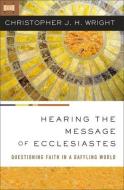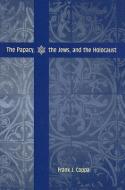
1227
1227 births, 1227 by country, 1227 crimes, 1227 deaths, 1227 disestablishments, 1227 elections, 1227 establishments, 1227 in Europe, Conflicts in 1227
- Editore:
Books LLC, Reference Series
- EAN:
9781155951058
- ISBN:
1155951050
- Pagine:
- 44
- Formato:
- Paperback
- Lingua:
- Inglese
Descrizione 1227
Source: Wikipedia. Pages: 41. Chapters: 1227 births, 1227 by country, 1227 crimes, 1227 deaths, 1227 disestablishments, 1227 elections, 1227 establishments, 1227 in Europe, Conflicts in 1227, Western Xia, Pope Honorius III, Pope Nicholas IV, Genghis Khan, Marco I Sanudo, Henry III the White, List of state leaders in 1227, Jochi, Leszek I the White, Ken Arok, Blackfriars, Bristol, Virumaa, Guala Bicchieri, Papal election, 1227, Qiu Chuji, Taifa of Dénia, Conrad of Urach, Bartholomew of Lucca, Balmerino Abbey, Henry V, Count Palatine of the Rhine, Louis IV, Landgrave of Thuringia, Elisabeth of Bavaria, Queen of Sicily, Battle of Bornhöved, Battle of Ane, Renaud I, Count of Dammartin, Shalva of Akhaltsikhe, Daniel and Companions, Aju, Hojo Tokiyori, Abd as-Salam ibn Mashish al-Alami, Suleyman Shah, Hu Zhiyu, Battle of Muhu, Abdallah al-Adil, Muju, Gertrude of Aldenberg, Shimazu Tadahisa, Vladislaus, Margrave of Moravia, Otto II of Lippe, William FitzGeoffrey de Mandeville, 3rd Earl of Essex, Roman Catholic Diocese of Cumania, Al-Mu'azzam, Hojo Nagatoki, Fang Hui, 1227 in poetry, Fordham Priory, 1227 in Ireland. Excerpt: Genghis Khan (pronounced or ; Mongolian: or ¿¿¿¿¿¿ ¿¿¿¿¿, , or , aka Chengiz Khan), IPA: ; probably 1162-1227), born Borjigin Temüjin ·), was the founder, Khan (ruler) and Khagan (emperor) of the Mongol Empire, which became the largest contiguous empire in history after his death. He came to power by uniting many of the nomadic tribes of northeast Asia. After founding the Mongol Empire and being proclaimed "Genghis Khan", he started the Mongol invasions that would ultimately result in the conquest of most of Eurasia. These included raids or invasions of the Kara-Khitan Khanate, Caucasus, Khwarezmid Empire, Western Xia and Jin dynasties. These campaigns were often accompanied by wholesale massacres of the civilian populations - especially in Khwarezmia. By the end of his life, the Mongol Empire occupied a substantial portion of Central Asia and China. Before Genghis Khan died, he assigned Ögedei Khan as his successor and split his empire into khanates among his sons and grandsons. He died in 1227 after defeating the Western Xia. He was buried in an unmarked grave somewhere in Mongolia at an unknown location. His descendants went on to stretch the Mongol Empire across most of Eurasia by conquering and/or creating vassal states out of all of modern-day China, Korea, the Caucasus, Central Asian countries, and substantial portions of modern Eastern Europe, Russia and the Middle East. Many of these invasions resulted in the large-scale slaughter of local populations, which have given Genghis Khan and his empire a fearsome reputation in local histories. According to William Bonner and Addison Wiggin, "It has been estimated that his campaigns killed as many as 40 million people based on census data of the times." Beyond his military accomplishments, Genghis Khan also advanced the Mongol Empire in other ways. He decreed the adoption of the Uyghur script as the Mongol Empire's writing system. He also promoted religious tolerance in the Mongol Empire, and created a unified emp












